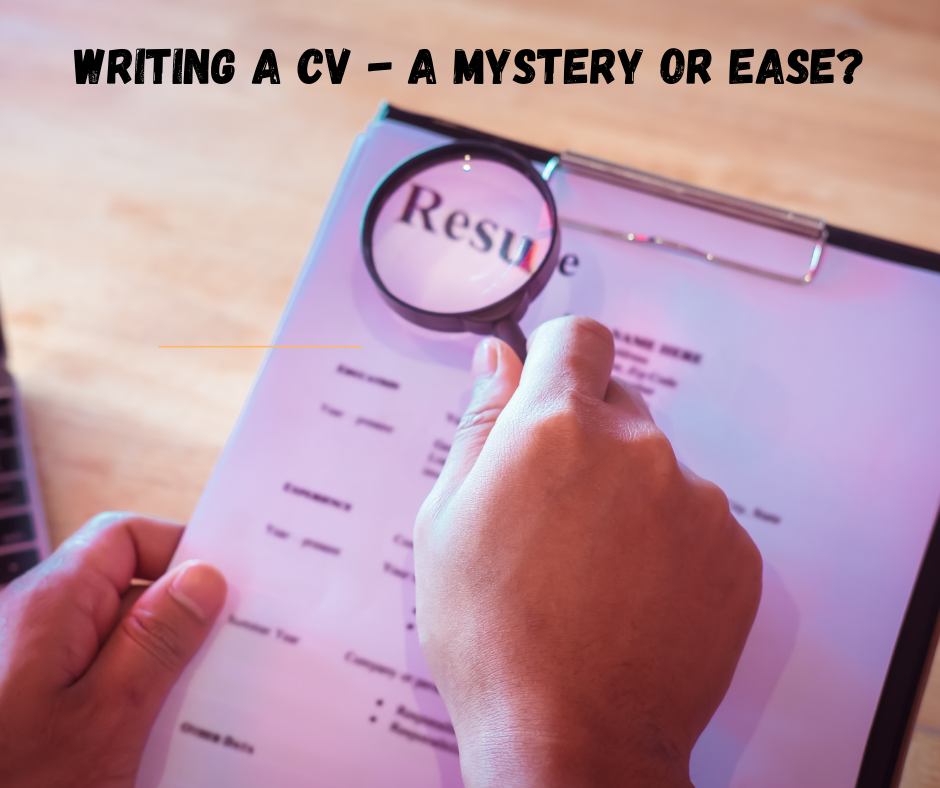Writing a CV – A Mystery Or Ease?

All aspects of a resume, including general style and layout, sentence structure, spelling, and, most crucially, content, must be given careful consideration. Even if the content is excellent, most employers will not read it if any of the other, more fundamental features turn them off. In the academic sector, you can ask for professional Law assignment help but when it comes to professional life, you have to manage everything – even the CV.
A solid CV/resume is the difference between a dream job and Option D for most job searchers. If you write a good CV, you’ll get responses from every organization you apply to.
However, if your CV isn’t up to par, you’ll be waiting weeks, if not months, for a response.
So you’re probably wondering how to write a resume that gets you daily invitations to interviews from HR managers.
You’ve arrived at the correct location!
We’ll teach you everything you need to know about how to construct a resume in this guide.
What is a CV/Resume?
A curriculum vitae, often known as a CV, is a document used when applying for jobs. It allows you to summarise your education, skills, and experience in order to sell yourself to potential employers. A cover letter is typically required by employers in addition to your CV.
CVs are known as résumés in the United States and Canada. These documents are typically shorter and do not adhere to any specific formatting guidelines.
Layout & Presentation
Your CV should be neat and well-organized, with plenty of white space to aid readability. Unless your industry has its own criteria, such as if you are expected to include your publications or information on many projects, it should be about two pages long.
Keep formatting like italics and underlining to a minimum and use a plain font like Arial, 10-12pt. Bullet points are quite handy since they allow you to emphasize important ideas quickly while still keeping the paper appearing neat. If possible, begin each one with an action verb (‘created,” managed, ‘increased, ‘improved,’ etc.) rather than ‘I.’
After you’ve proofread and spell-checked it, hand it over to a friend to do the same. Hiring firms receive a large number of applications, and making a simple mistake can result in your application being rejected.
Tips To Create a CV/ Resume
1. The Introduction Part
NEVER underestimate the importance of this section of your CV. This is the section where you should summarise and underline the benefits you can provide to a potential employer. Include any career highlights that will help people remember what you’ve done. It should be personalized to each position you apply for, with the goal of making you stand out from the crowd.
2. Put in the Essence of Reality
A CV should be no longer than two pages – and that’s on A4 paper! Employers look over each CV /resume for an average of 8 seconds, so sending them your entire life story is a surefire way to wind up on the no pile. Keep it brief and to the point; save the nitpicky details for the interview.
3. Let the Recruiters Reach Your Out
If no contact information is provided, how will the recruiter contact you? Include your entire name, home address (if applicable), phone number, and email address. You don’t need to include your date of birth, and you don’t need to include a photograph unless you’re looking for an acting or modeling job.
4. Pay Attention to How You Showcase the Experience
Yes, there is a correct and incorrect methods to approach your work experience area.
Make sure to include the following information when writing about your previous tasks or accomplishments:
Data and numbers: It has more impact to say “raised sales by 20%” rather than merely “improved sales.”
Timeframe: What was the length of time it took you to achieve results?
You are responsible for your actions. What steps did you take to bring things to fruition?
Or, to put it another way, consider the following scenario:
“By enhancing the menu and attracting new customers, I was able to increase the restaurant’s revenue by more than 20% in 2021.”
5. Mentioning the Education
Not every employer needs to know about all the degrees you own. Yes, you have read that right. Starting with the most recent, only list what is relevant or required for the position you are applying for. It’s vital to emphasize any areas where you’ve enhanced your talents or have new knowledge to offer the organization.
6. Talk about your hobbies & interests
If you utilize it, try to keep it interesting. Unusual hobbies, again, ones that add to your suitability for the work; avoid standard activities like reading, walking, and so on. As a result, make sure you choose interests that will help you stand out.
Endnote:
The confusion or curiosity about how to write a CV is never-ending. Once you step into your professional life, this essential will move with you till the end. Therefore, in this article, we have provided some useful tips that can help you write an amazing CV. So why are you worried when we are here to have your back?





